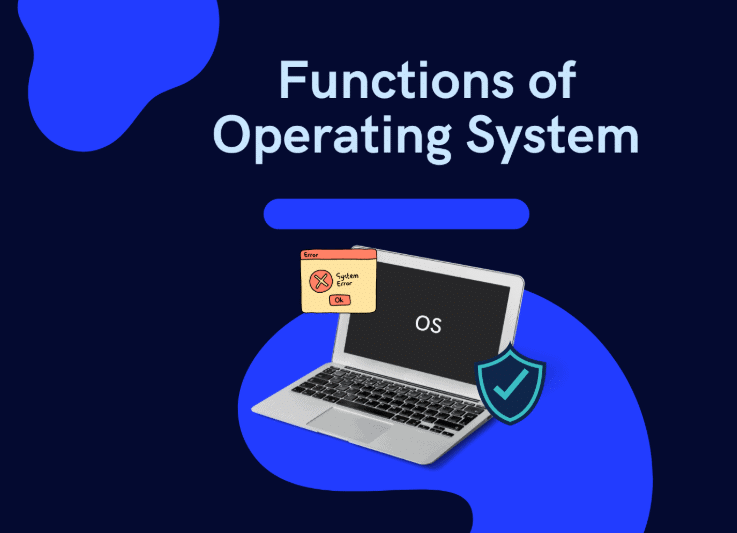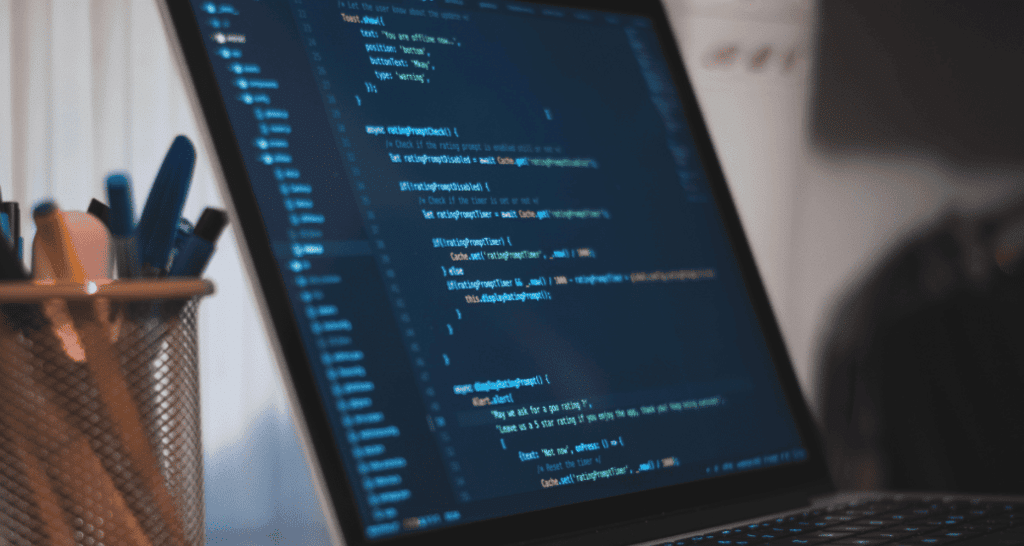Functions of Operating System | Famous Books for UPSC Exam (Summary & Tests) PDF Download
Functions of Operating System
An Operating System (OS) is the backbone of any computing device, responsible for managing both hardware and software resources. It ensures smooth interaction between the user and the hardware while efficiently handling system operations. The core functions of an OS include process management, memory management, file handling, device control, and ensuring system security. These functions work together to provide a stable and user-friendly environment for running applications and performing tasks.

Device Management
The OS manages communication with devices through their specific drivers. Key activities in device management include:
- Keeping track of all connected devices.
- Determining which process gets access to a device and for how long.
- Efficiently allocating and de-allocating devices as needed.
File Management
A file system is usually organized into directories for easier navigation. The OS manages files and directories by:
- Monitoring information such as location, usage, and status of files.
- Ensuring proper allocation of resources to users.
Memory Management
Memory management involves overseeing the primary memory, which consists of a large array of words or bytes, each with a unique address. The OS performs the following tasks for memory management:
- Keeping track of which parts of memory are in use and by which processes.
- Identifying unused memory areas for allocation.
Processor Management
In a multi-programming environment, the OS decides which process receives the processor and for how long. Tasks include:
- Monitoring the status of the processor and running processes.
- Allocating and de-allocating CPU resources as needed.
Types of Operating System
Operating systems are classified into various types based on their functionality and the way they serve users or applications. Each type is designed to handle specific tasks—whether it's managing tasks for a single user, supporting multiple users, handling real-time operations, running on mobile devices, or coordinating across networked systems. Knowing these different types makes it easier to choose the right OS for any specific computing requirement.
1. Batch Operating System
Batch Operating System is designed to execute similar types of tasks together without user interaction. Instead of direct communication with the computer, an operator groups jobs with similar needs into batches. These batches are then executed sequentially by the system, increasing efficiency in handling large volumes of repetitive tasks.
Advantages:
Multiple users can share the system.
Idle time of the CPU is minimized.
Suitable for repetitive and large-scale operations.
Disadvantages:
CPU may remain idle during I/O operations.
Delay in execution if a job fails.
Higher average response time as jobs are processed sequentially.
Examples: Payroll Systems, Bank Statements.
2. Multiprogramming Operating System
Multiprogramming Operating System allows multiple programs to reside in the main memory at the same time. The CPU executes one program while others wait for their turn. This system ensures better resource utilization and improved CPU performance.
Advantages:
Better CPU utilization.
Improved overall system efficiency.
Reduces response time.
3. Time-Sharing Operating System
Time-Sharing Operating System is a type of multiprogramming OS where each task is allotted a fixed time slice (called quantum). After its time is up, the system switches to the next task. This gives an impression of simultaneous execution, allowing multiple users to interact with the system in real time.
Advantages:
Equal opportunity for each task.
Reduces CPU idle time.
Enhances productivity and user experience.
Allows resource sharing among users.
Disadvantages:
More complex to manage.
High overhead due to scheduling and context switching.
Security risks due to multiple user access.
Examples: IBM VM/CMS, TSO, Windows Terminal Services.
4. Multiprocessing Operating System
Multiprocessing Operating System involves more than one CPU for executing programs, enabling parallel processing. It enhances the performance of the system by dividing tasks among multiple processors.
Advantages:
Higher system throughput.
Increased reliability—if one processor fails, others continue to work.
5. Multi-User Operating System
Multi-User Operating System allows several users to access the system concurrently. It can be implemented on either single or multiple processors, managing interleaved processes from different users efficiently.
Advantages:
Efficient resource sharing.
Simultaneous user interactions.
Suitable for time-sharing and network environments.
6. Distributed Operating System
Distributed Operating System connects independent computers via a network, enabling them to communicate and share resources. Each computer has its own memory and CPU, and users can access remote resources as if they were local.
Advantages:
Independent system failures don’t affect the entire network.
High speed of data exchange via email and shared files.
Scalable and fast computation.
Reduces the load on central systems.
Disadvantages:
Failure in main network halts communication.
Complex and expensive to implement.
Risk of security breaches over public networks.
Examples: LOCUS and similar systems.
7. Network Operating System
Network Operating System operates on servers and facilitates resource sharing among computers over a private network. It provides centralized control for security, file sharing, user management, and access to hardware.
Advantages:
Stable centralized server management.
Enhanced security through the server.
Supports remote access.
Easily integrates new hardware or software.
Disadvantages:
Costly servers.
Dependency on central server.
Requires regular maintenance and updates.
Examples: Windows Server, UNIX, Linux, Mac OS X, Novell NetWare.
8. Real-Time Operating System (RTOS)
Real-Time Operating System is designed to respond to inputs within a specific time frame, making it ideal for critical applications like robotics, military systems, and medical equipment. These are classified into Hard and Soft real-time systems depending on how strict the time constraints are.
Advantages:
Optimal resource utilization.
Minimal task shifting time.
Reliable and error-free.
Well-managed memory allocation.
Suitable for embedded systems.
Disadvantages:
Limited multitasking.
Requires powerful (and expensive) hardware.
Complex algorithms and system design.
High dependency on specific drivers and interrupt signals.
Less flexible with thread priority.
Examples: Air traffic control systems, robotics, weapon systems, industrial control systems.
9. Mobile Operating System
Mobile Operating Systems are specially designed for mobile devices like smartphones and tablets. These systems manage hardware and support mobile applications and features such as touch input, sensors, and wireless connectivity.
Examples: Android, iOS.
User Interface
The User Interface (UI) is the point of interaction between the user and the computer system. It allows users to communicate with the operating system and perform tasks without needing to understand complex programming languages. A well-designed UI enhances user experience by making system operations intuitive and accessible. Operating systems typically offer two main types of user interfaces: Graphical User Interface (GUI) and Command Line Interface (CLI), each serving different user needs and preferences.
Character User Interface
The Character User Interface (CUI), also known as the command line, command screen, or text interface, is a user interface that you navigate by typing commands instead of using a mouse. In contrast to a Graphical User Interface (GUI) operating system, a command line relies solely on the keyboard for navigation by entering specific commands.
Learning to use a command line interface can be more challenging because it requires memorizing particular commands. However, a command line operating system can be a powerful tool. For example, users of Microsoft Windows may find it difficult to rename over 100 files in a folder through the GUI, but this task can be accomplished in seconds with a simple command in the command line.
Graphical User Interface
A Graphical User Interface (GUI) utilizes windows, icons, and menus to carry out tasks such as opening, deleting, and moving files. While GUI operating systems primarily rely on a mouse for navigation, users can also use the keyboard with shortcuts or arrow keys. Unlike a command line operating system or CUI, such as Unix or MS-DOS, GUI operating systems are generally easier to learn and use because there is no need to memorize commands or know any programming languages. This user-friendly nature has made GUI operating systems the most popular choice among users today.
Some widely used examples of graphical user interfaces (GUIs) in various operating systems include:
- Microsoft Windows
- Linux
- Chrome OS
|
744 videos|1444 docs|633 tests
|
FAQs on Functions of Operating System - Famous Books for UPSC Exam (Summary & Tests)
| 1. What is the function of an operating system? |  |
| 2. How does an operating system manage computer resources? |  |
| 3. What are the different types of user interfaces provided by an operating system? |  |
| 4. What is process scheduling in an operating system? |  |
| 5. Can an operating system be updated or upgraded? |  |

















